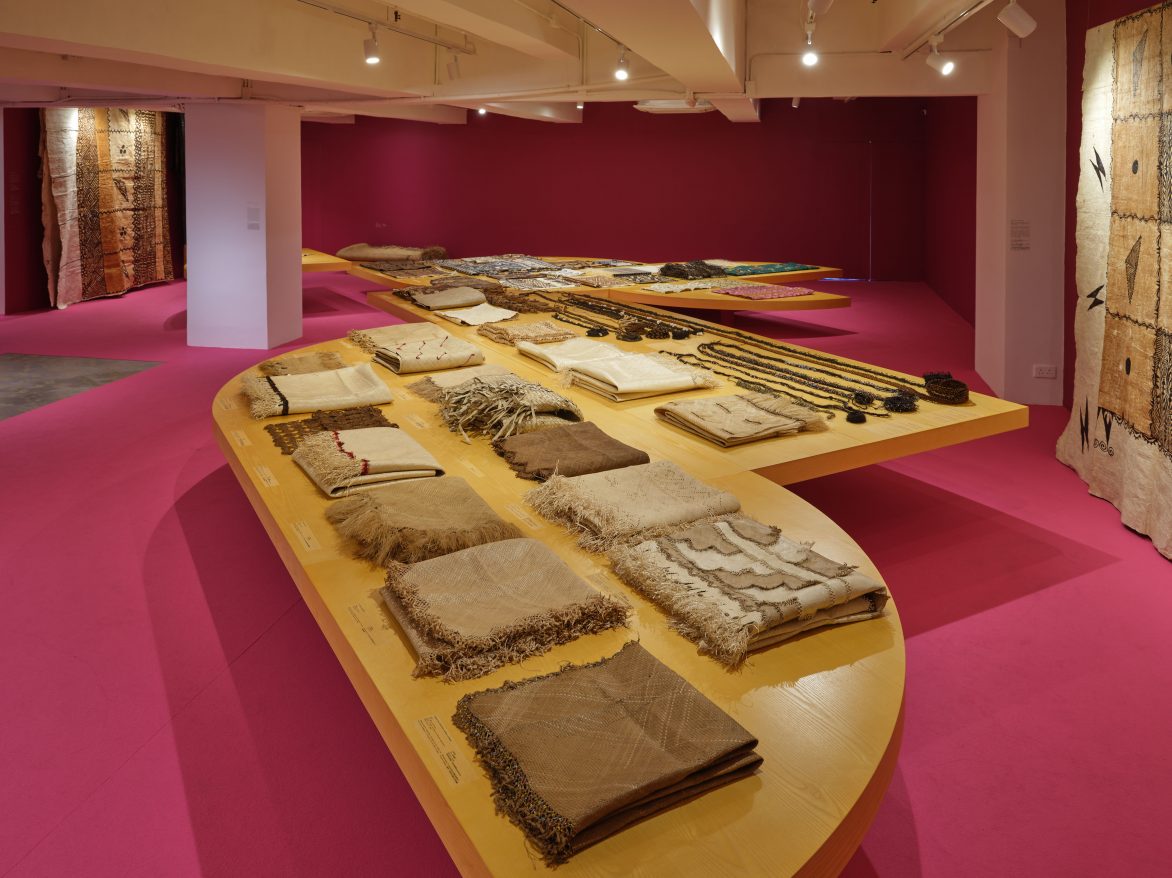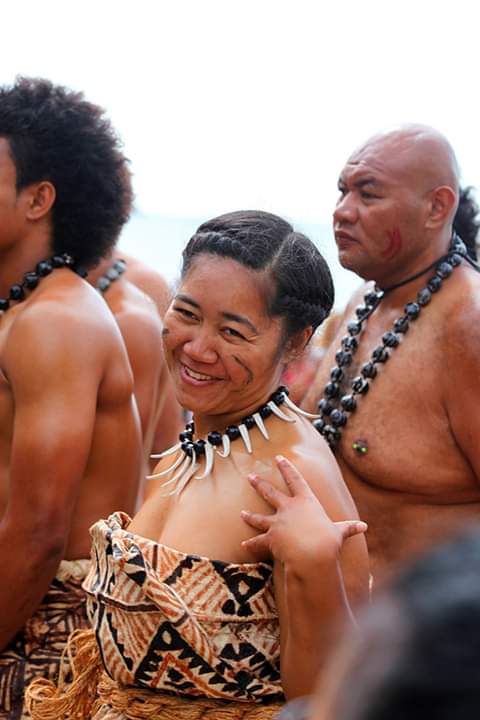
Para Site is proud to present the exhibition , an unprecedented international presentation based on the life-long research of , the Kingdom of Tonga’s foremost knowledge-holder of ‘koloa’ or customary women’s arts in Tonga. The exhibition in Hong Kong marks the second presentation of the exhibition, which was launched in August this year as a partnership between Para Site and the Langafonua ‘a Fafine Tonga, a historic centre for women’s customary arts, established by in 1953 in Nuku’alofa. has often been consulted and has written for major international research and museum projects, but this will be the first exhibition that presents her exceptional work and perspective to both Tongan and international audiences under her acknowledged authorship. The exhibition thus features a rich array of Tongan art practices, focused upon the main categories constituting koloa: ngatu or bark cloth making and fine weaving such as ta’ovala garments and ceremonial mats, as well as kafa or woven rope. The presentation includes prized, heirloom pieces as well as newly produced examples specially commissioned for the exhibition. These new pieces ensure a full exploration of design motifs and techniques of Tongan artistic practices, at the same time as they support vision to stimulate and support village-based women’s groups who gather and maintain the skills, stories, songs, and knowledge that make up koloa. For its international presentation at Para Site in Hong Kong, the exhibition expands its scope with a parallel, curated presentation of three women artists, , that further reflects upon the sophisticated status of aesthetic lineages in the Pacific as inseparable manifestations of art and technology.
The artistic practices of koloa are enmeshed within extensive pathways of knowledge, technology, aesthetics, as well as social and ecological lineages. Their production indexes a political geography of eco-social relations through both the materiality and the motifs of particular pieces. Through a ceremonially orchestrated system of exchange, the arts of koloa have been a crucial component in politically, socially, and culturally binding an extensive maritime geography of the some 170 islands of Tonga. Exchange also extends to neighbouring nations such as Fiji and Samoa, and beyond, maintaining close historical ties in trading and familial relations despite the enforced partitions of the colonial era and the enclosed and bordered formation of the modern nation-state. The exhibition thus presents examples of artistic practices from the Pacific region, highlighting the specialisation of techniques and styles, as well as various efforts of revitalising lost or dwindling practices. As part of the exhibition’s broader affirmation of the need for establishing a horizontal platform for reading contemporary artistic practices of various lineages, this accompanying presentation includes examples of bark cloth and textiles from greater Asia, Latin America, and Africa—associating pieces based on their shared influences but also on their similar visual qualities, social function, and historical narratives, in a manner emphatically closer to contemporary art curating principles than traditional ethnographic selections.
Organising this exhibition within a contemporary art institutional framework affirms a commitment to expanding what is acknowledged as contemporary artistic practices. It responds to this political agenda to decolonise our taxonomies and perspectives and to move beyond the category of art as defined by the colonial legacy, by including artists working with and from within multiple aesthetic and cosmological perspectives and meanings, manifesting the multiplicities that construct our kaleidoscopic global reality. This includes as a matter of urgency practices that have been systematically excluded from the realm of art and designated by a colonial ethnographic gaze as craft, folklore, or at best, ‘traditional’ art, even if these practices often perform analogous cultural and social functions in their communities as art does in the system of global society. The presentation and reception of such work in the changing and critical field of contemporary art recognises the same evolving nature of these practices, as well as their potential for a critical reflection of their contexts, as opposed to the static and obedient character assigned to them by the Westerncentric perspective.
While the inaugural exhibition at Langafonua in Nuku’alofa focused upon a social activation of koloa as a vivid aesthetics and technics, the inclusion in the Hong Kong iteration of the three contemporary artists from the Pacific broadens and deepens this conversation. With reference to distinct knowledge repertoires and practice archives such as Sāmoan tatau (body-marking), Māori ocean and celestial navigation charts, and the incorporation of modern technology into existing infrastructures such as ngatu, each of these artists pries open the powerful relation of art and technology with a grounding in women’s knowledge and practice.


















